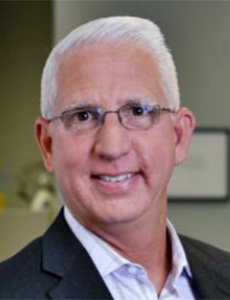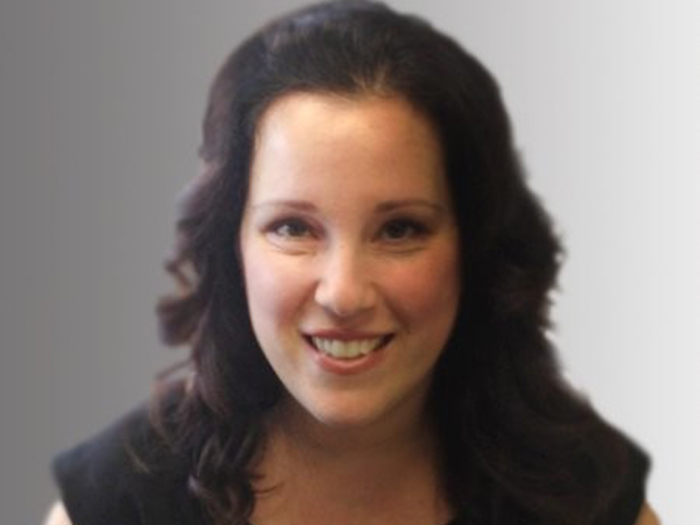Sponsored: Carisk Partners
Defining Meaningful Patient Engagement: How Keeping Patients Motivated and Fully Engaged in Their Recovery Process Improves Outcomes

When a person suffers a serious physical injury at work, the nature of a catastrophic event can have as much of an emotional impact as a physical one. The loss of independence being out of work, and the fear, stress and grief that often accompanies a workplace accident can be demotivating for the injured worker. This often leads to a cycle of depression or other behavioral health factors, making the patient more susceptible to compounding health issues, prolonging a claim and thereby increasing the costs.
David Vittoria, SVP, Clinical Services at Carisk Partners, has spent 28 years in the field of behavioral health. For the last three years, he has overseen the clinical services department at Carisk and has witnessed first-hand the benefits of incorporating meaningful patient engagement into the workers’ compensation process.
“We start by recognizing the dynamics of workers’ compensation,” said Vittoria.
“Oftentimes, injured patients come to us with a view that the workers’ comp system is adversarial, even downright distrusting, of the injured worker,” he explained.
For many patients, a work injury is the first introduction they have to the workers’ comp system. In addition to feelings of confusion and distrust, the injured worker will likely be facing the stressors of outside socioeconomic and other factors that can cause a delay in their recovery.
“They might feel like they are lacking control over what’s happening to them during the healing process,” said Vittoria, “and the fear that they might no longer be able to have a productive life can lead to frustration, anxiety, grief and depression.”
It’s not uncommon for someone who’s out of work to be concerned about their finances. It is especially true for someone who may be grappling with a physical injury that might jeopardize their ability to generate future income and put at risk the comfort and security that comes with that financial predictability. The injured worker may be dealing with a role shift in the household, where now they are no longer the primary breadwinner. They might be worried over the status of their job post-injury.
But, Vittoria added, with a meaningful patient engagement approach, employers can begin to address those presumptions and stressors head on.
“A meaningful patient engagement approach isn’t meant to confront someone’s thinking or behavior. More so, it is designed to identify, address and honor these thoughts and feelings, and empower the person who got hurt with the knowledge, support and resources they need in order to take ownership of their recovery and responsibility for their choices,” he said.
Vittoria said that through these kinds of motivational enhancement techniques, the team can help a patient increase their confidence, reinforce their safety and security, enhance their trust in the process, reduce their stress and ultimately, help them accomplish their goals in recovery.
“We help patients utilize their unique strengths, personal skills and positive attributes, because our goal is not to get a patient to do what we want. It’s to meet the patient precisely where they are at in their journey to help them do what they feel they can achieve. It’s about ownership and the right each of us has to self-determination; and it’s no different because someone got hurt at work,” Vittoria said.
Defining the Approach

David Vittoria, SVP, Clinical Services at Carisk Partners
The idea behind patient engagement is to have the injured patient involved in the management of their health care as they recover.
To do that, “we want to know as much about the patient as we can,” said Vittoria.
A lot of this information is gained in the comprehensive clinical interview. Family life, important relationships, financial commitments, strengths, activities outside of work — Vittoria said that everything impacted by an injury —not just the physical consequences — are important to understand when working with a patient. Knowing about and understanding the value and importance of each of these areas in someone’s life are what Vittoria calls “critical success factors.”
He said, “If we leave anything out, fail to learn as much as we can about who this human being is now and who they were before their injury, then we will likely miss that person, activity, attribute or some aspect of their life before injury that holds the key to what their life could be now, after they got hurt.”
“It’s not about having the answers in this business; that only minimizes the patient’s wishes and removes their power in the process. It’s about asking the right questions,” he said.
By focusing in on the patient’s well-being, not just medically but from a socioeconomic standpoint, the care team is driving toward better results, including improved quality of life and outcomes, lower costs and a speedier recovery.
The comprehensive clinical interview all begins with an introduction that sets the stage for the relationship and begins building trust immediately.
“It may seem like a simple step, but it’s crucial to set up a direct and authentic line of communication between every patient and their uniquely-matched clinical care team,” said Vittoria.
The introduction sets the stage for the patient. They learn who their care team is and what the team’s role is, essentially as guides on their pathway to recovery. Vittoria said that at this time, clinical teams like the one at Carisk will also include friends, family members, colleagues — whomever the patient trusts and sees as a positive person in their life that can help them heal — in the introductory process.
“The family plays a huge role in the entire clinical assessment and patient engagement process,” he explained. “They also play an integral role in the patient’s ongoing support and recovery. To leave them out implies that they were not affected by the injury that happened to their loved one. And that, of course, would be naïve.”
Above all, Vittoria said, it’s important for the patient to know they are being looked after as a person first; not just an injured worker.
“That’s our perspective,” he said. “They are not injured first to us. They are a person who was hurt and a person in need of compassion, care, guidance and support.”
With the trust and rapport that is developed through this approach, the patient becomes an active, and fully engaged, participant in their recovery process. The American Academy of Family Physicians found that there is a positive association between developing trust with a patient and engaging patients to take an active role in their health. The AAFP patients who were activated and engaged were more likely to adhere to healthy behaviors recommended by their physicians, which lead to quicker recovery and lower costs.
“Patients know that they are at the center of their injury — they are reminded of that reality every day. What patients in workers’ comp are not often reminded of — which is what we pay very close attention to as a part of our reality every day — is that each one of them is at the center of their recovery as well,” said Vittoria.
When someone is hurt, the physical pain and sometimes arduous journey that goes along with it can cause a person to feel alone, fearful and powerless.
“We tell our patients right at the outset, and remind them every single day, that they are not alone, and that their thoughts, their feelings and their decisions matter,” said Vittoria.
“This is not just about being kind and empathetic — two things that surely define who we are and what we do, there’s no doubt. But it’s also effective. Carisk does it because it’s right, and we do it because it works. It promotes progress on both fronts, because helping a patient advance in their recovery helps reduce the chances for medical and other setbacks; it also helps a claim advance and mitigates the risk for the higher costs that will come with a delay in recovery.”
Patient Empowerment

Engaging a patient is more than setting up an introduction — though that is still a crucial element.
“The clinical team introduces itself to bolster trust and rapport,” said Vittoria. “Once that foundation is set, we get to know who the patient really is.”
From there, the clinical team can get started on the medical and psychosocial assessment of the patient. They create a treatment plan with recommendations that address not just the physical injury, but the psychological, social and even spiritual aspects as well.
Through these actions, the clinical care team shows that they are an advocate for the patient. They are there to discuss treatment, answer questions on both health care and the workers’ compensation system, and to help the patient get back to more than just work.
“When a patient recognizes that we’re not just there to ask questions or advocate for somebody else’s definition of what their new normal should be, but that we actually want to learn more about their life outside of the injury, without fail, that has been extremely positively received,” said Vittoria.
He gave the example of a case Carisk has been monitoring for over a year.
The patient was injured at work, which led to severe anxiety and depression. In his personal life, the patient also lost several family members in a short time span.
Because Vittoria’s team spent the time upfront with the patient, getting to know him, understanding the importance of many relationships in his life and building a level of trust that afforded them the consistent support, encouragement and communication the patient needed, the patient has remained in constant contact with his care team, amidst his struggles through physical pain and emotional grief. He is present and active in his recovery, because Carisk’s clinical team has been present and active on his behalf from day one.
“This is an example of somebody who couldn’t get out of bed before we met him,” said Vittoria.
“Every single time that we engage with patients, from that moment of introduction through the comprehensive clinical interview, through the ongoing care coordination process, we receive positive feedback from patients, from their family members, even from providers,” he said.
And, according to Vittoria, that positive feedback trickles down to customers.
“By engaging the patient in their recovery and showing them that there is a team working for their physical health as well as their emotional wellness, the clinical team using a meaningful patient engagement approach is also positively impacting the workers’ compensation claim and enhancing positive results for the customer.”
Making Patient Engagement Truly Meaningful
Engagement with patients does not look the same for every injured worker; that is why implementing a meaningful patient engagement approach starts with having the right team in place. This is not a one-size-fits-all approach; it is custom-tailored to the unique needs of every individual.
At Carisk, every member of the clinical team is recruited for and extensively trained on how they communicate with injured workers in order to create that meaningful connection with every patient. Each Carisk team member has a thorough understanding of the different levels of engagement a patient may want to have and has the clinical expertise and practical experience required to actively listen, promote healthy behaviors, assess and adapt to where patients are in their readiness for change, and are seasoned clinicians who recognize the key elements of what Vittoria calls the “therapeutic alliance.”
“We’re here to help inform, educate, support and advocate for patients who do not feel heard or were presented with clinical options that weren’t helping with their trauma, anxiety or depression,” said Vittoria.
Carisk has a carefully designed set of response items as part of their Comprehensive Clinical Interview, which are used to better understand where a patient is at in their recovery. The purpose of this approach is to discover what happened, how the patient is responding to current treatments, what’s working, what could be better or different for them and their family, and — importantly — if and how ready a patient is to change.
“Our clinical team is trained in active listening, as well as reflective listening,” said Vittoria.
And the Carisk clinical team is trained to not only document the content of a response from a patient but also understand the context of that response. The team is also constantly learning from their patients to enhance their approach. Carisk’s partnership with Valera Health, a digital health startup, is just one of the many additional components to their contemporary approach that is helping to make a difference in the industry, and more importantly, in the lives of the patients who are entrusted to their care.
Through the use of this digital application, and with the permission and engagement of the patient throughout the process, the Carisk clinical team is able to bolster their activation and engagement methods — as well as their outcomes — by sending educational materials to patients about things like eating healthy and engaging in physical exercise, if they can. The team can chat with patients in real-time and offer encouragement and support; they are able to help a patient track their progress towards certain goals utilizing tools such as a digital scale and leveraging wearable technology. The Carisk team is also able to measure a patient’s emotional status and coping skills through brief assessments that address symptoms of depression and anxiety.
“We’re listening beyond the words of what a patient is saying; we’re listening to the context of what they are saying, the emotional resonance that comes with it, and engaging with patients, family members, providers and our customers every day … all in effort to help every one of our stakeholders achieve they outcomes they expect, and deserve,” Vittoria said.
To learn more, visit: https://www.cariskpartners.com/
.
This article was produced by the R&I Brand Studio, a unit of the advertising department of Risk & Insurance, in collaboration with Carisk Partners. The editorial staff of Risk & Insurance had no role in its preparation.










